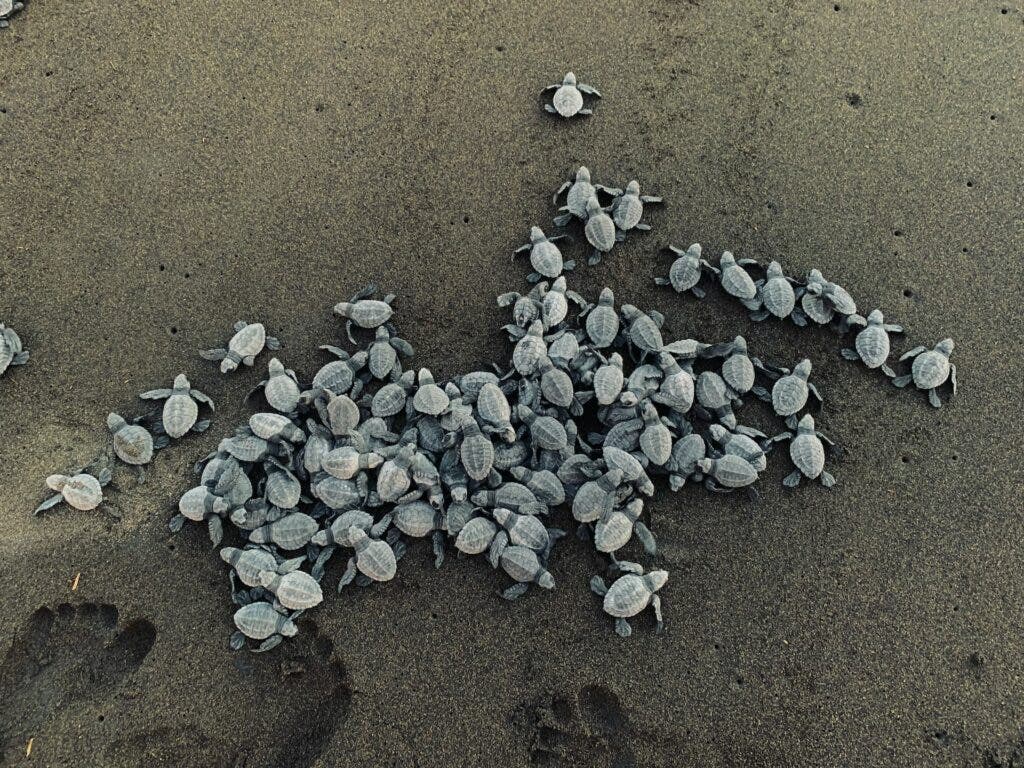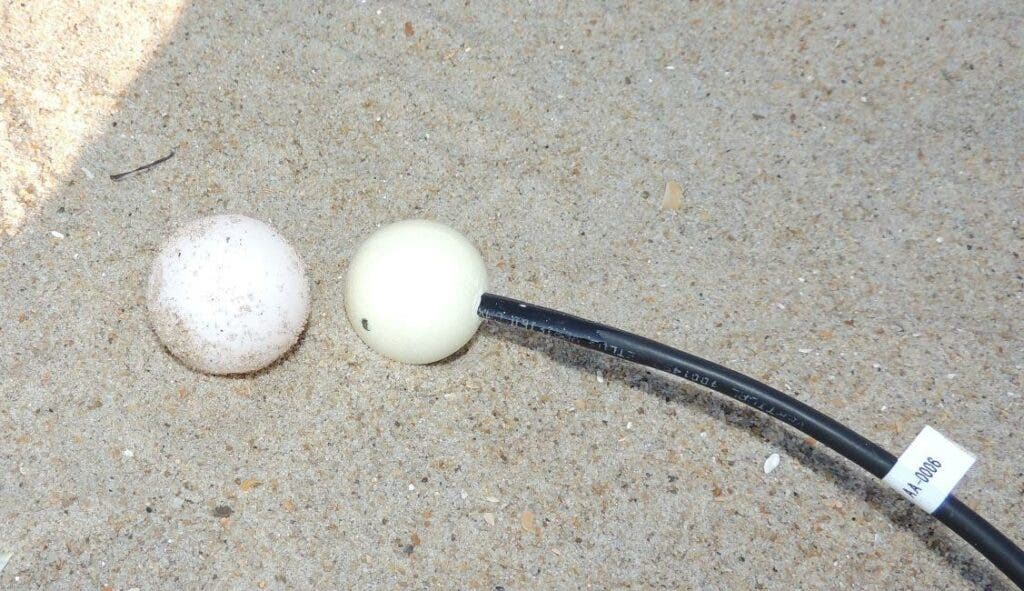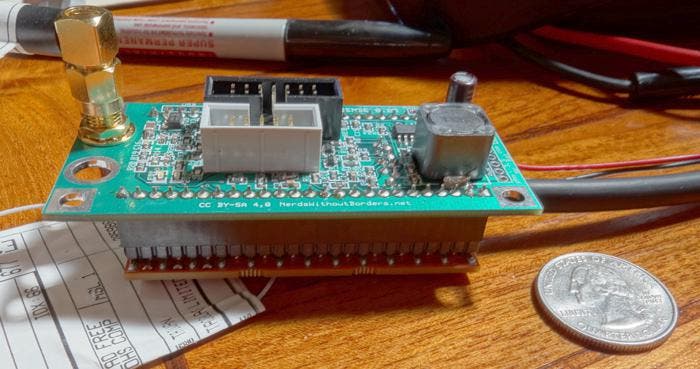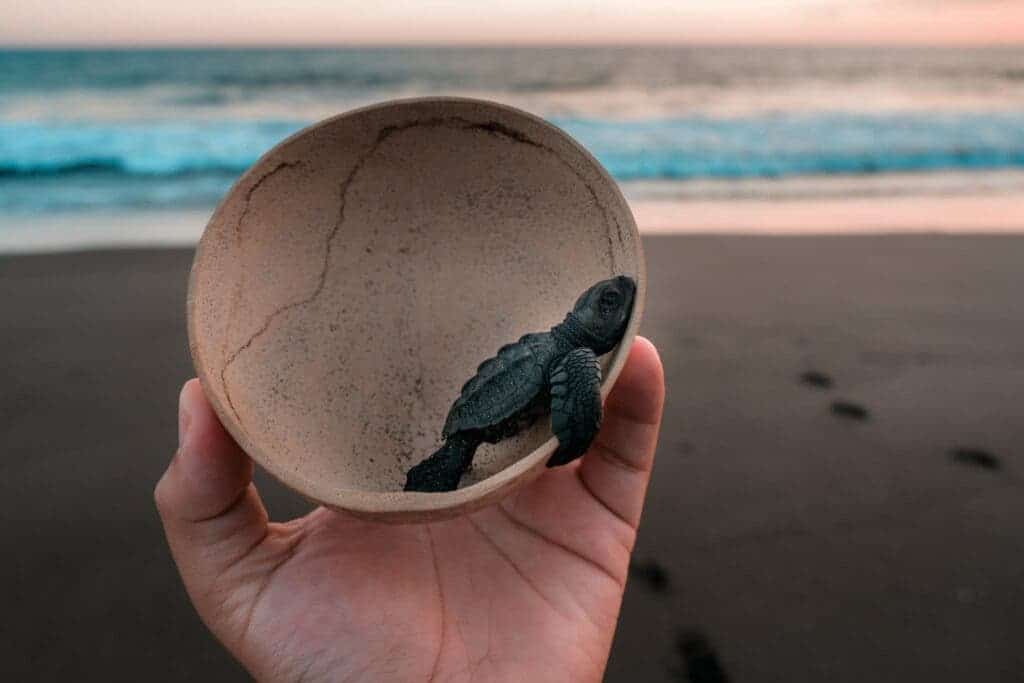According to the World Wildlife Fund for Nature (WWF), half of the sea turtle species are critically endangered and currently, almost all of the sea turtle species are witnessing a rapid decline in their population. A National Ocean Service report reveals that out of every 1000 hatched sea turtle eggs, only one makes it to the sea and manages to become an adult. If sea turtles keep dying at the current pace, unfortunately, many of the species will go extinct within a span of 20 years.
However, there is a budget-friendly device that could help us save the lives of many sea turtle hatchlings. In a study recently published in PLoS ONE, scientists have developed a sensor that can monitor turtle nests, predict when the eggs in a nest will hatch, and share this information with conservationists sitting remotely. The device is called the TurtleSense system and it looks just like a turtle egg.

TurtleSense is better at predicting egg hatching
Previously, one of the only clues that turtles were going to emerge from a nest was a depression in the sand that formed a few days prior. However, the researchers suggest that depression only happens in some nests. Plus, the timing of when the depression forms are inconsistent, and many nests never develop depression.
So a new, more accurate solution was needed.

Some experts have also tried using temperature and weather conditions to estimate when hatchlings will emerge but the results have not been very accurate. While highlighting the accuracy of TurtleSense, one of the authors and project manager at Nerd Without Borders, Samuel Wantman told ZME Science:
“Our system has been able to predict emergence 4 to 5 days in advance with an accuracy of about a day. We’ve also been able to predict hatchlings that might be endangered by severe weather and over-washes and rescue the baby turtles before they drown in the nest.”
Wantman and his team buried the TurtleSense sensors inside the nests of loggerhead sea turtles located at Cape Hatteras National Seashore. Every TurtleSense device comprises a motion sensor (or accelerometer), and a microprocessor fitted on a circuit board (size is less than one square inch). The circuit board is further embedded in a plastic ball the size of a turtle egg (about the size of a ping-pong ball).

The electronics on the circuit board collect and analyze motion about 60 times per second, 24 hours a day. The motion sensor is connected by a cable to a cell phone unit nearby, which sends the data to a server every 4 hours when it is getting close to the time that the eggs might start hatching. Then the software on the server located remotely creates a graph of the data that allows scientists to visually interpret the motion happening in the nest from any computer connected to the internet.
In case, a nest is non-viable (the eggs won’t hatch), no motion is observed by the sensor, and therefore, by looking at the graph the scientists can decide that there is no need to monitor that particular nest.
Benefits and limitations of TurtleSense
Turtle Sense enables scientists to study the behavior of hatchlings before they emerge. It also accurately tells us when a sea turtle egg is likely to hatch and which eggs would never hatch. Such information could further allow conservationists to protect sea turtles in greater numbers. Moreover, in places where sea turtles share the beach with humans, protections for the turtles can be put in place for shorter periods using the data from TurtleSense.

The researchers suggest that the technology can also be used to stimulate eco-tourism. However, during the study, the researcher only installed a single sensor near the top of the clutch of eggs. They couldn’t monitor the activity of hatchlings once they were above the sensors. They also admit that disturbance from the environment, other animals, and humans can also make it difficult to interpret the data from the sensor.
“Yes, the devices can and did stop working due to external factors. For instance, saltwater is a very unforgiving environment for electronics. Occasionally a connector would fail. We had to make some engineering changes with each problem we encountered. A couple of units were also washed away during a hurricane that removed the section of the beach where the nest was. Other units had no problem making it through hurricanes,” said Wantman.
The researchers believe that after coming out of their eggs, the hatchlings might just wait for the activity in the nest to quiet down and then use temperature clues to determine a good time to start their journey into the surf. However, this is just a theory and can only be confirmed with further research. Wantman also shared that his team would also like to hand off their technology to whoever would like to continue the research.
The study is published in the journal PLoS ONE.


